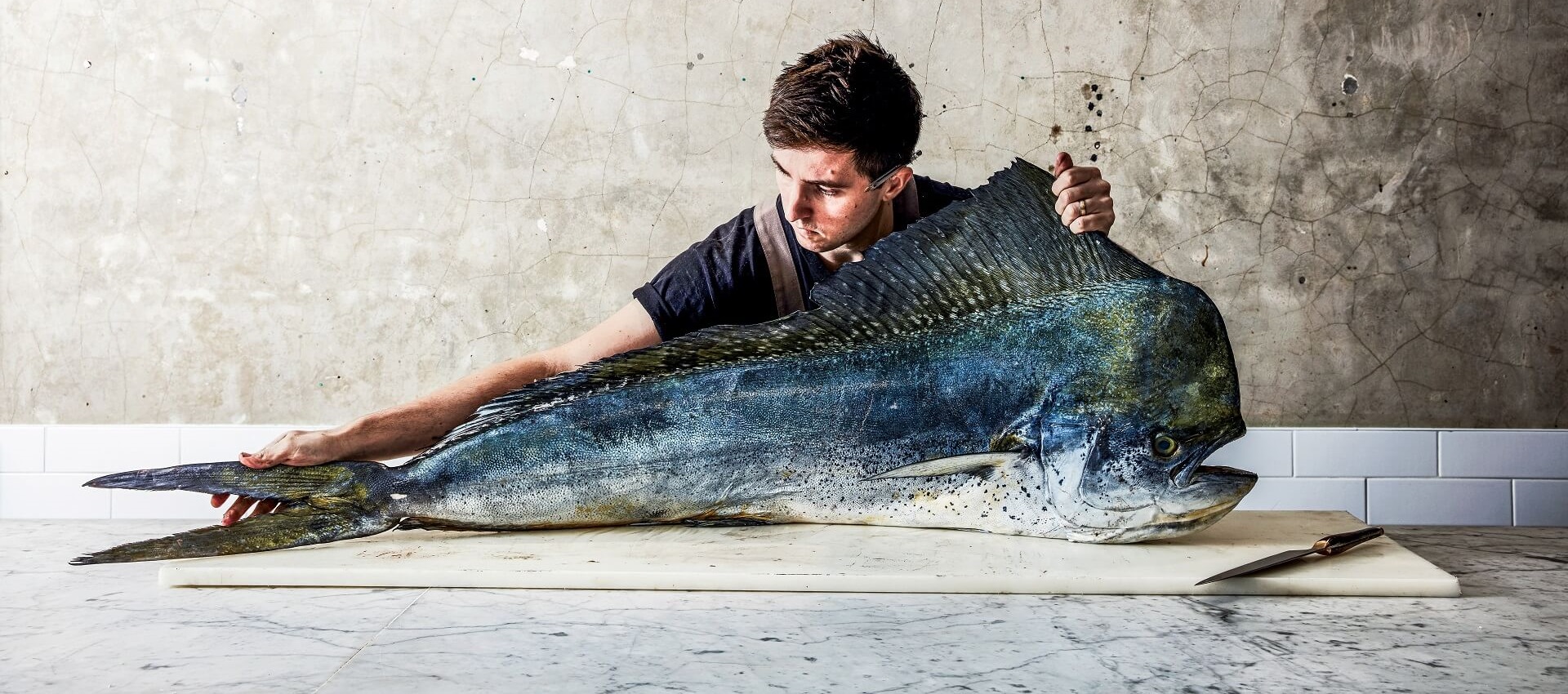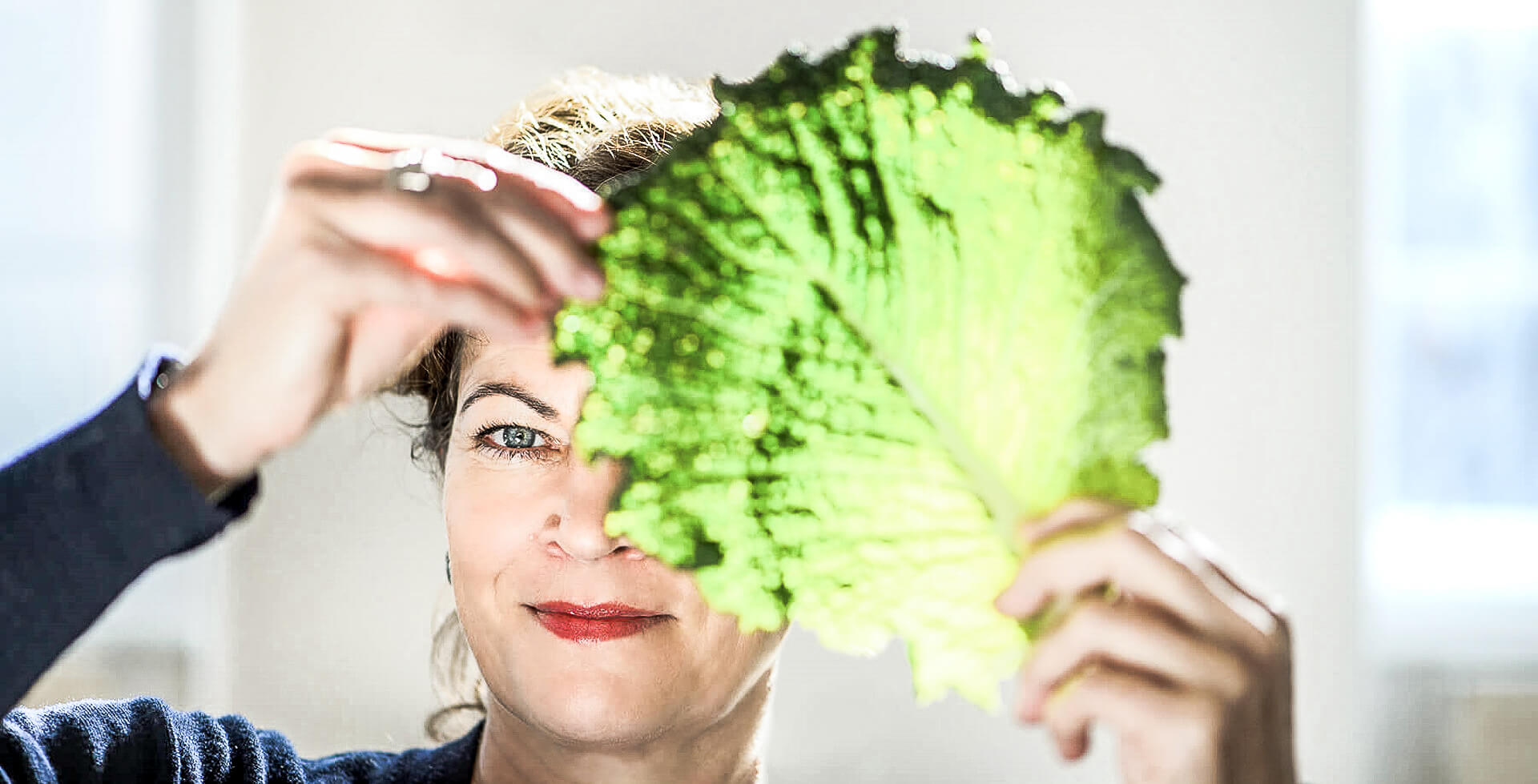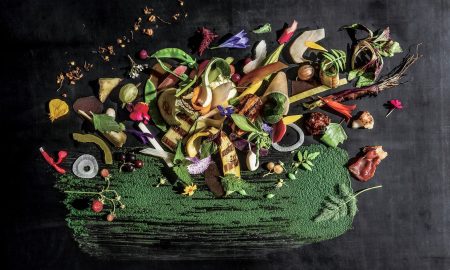Top international gastronomy has long since become a hyperdynamic network that draws on findings from several disciplines: from agronomy, biology and chemistry to sociology and economics, it continuously absorbs the latest achievements from the most diverse fields of knowledge and makes use of them in its own unique way.
It is all the more surprising that certain myths hold fast. For example, “The fresher, the better.” This maxim – understandably, on the one hand – naturally applies to every kind of food; however, it is not as vehmently and naively upheld as it is when it comes to fish. But why? That was what Josh Niland asked himself a few years ago.
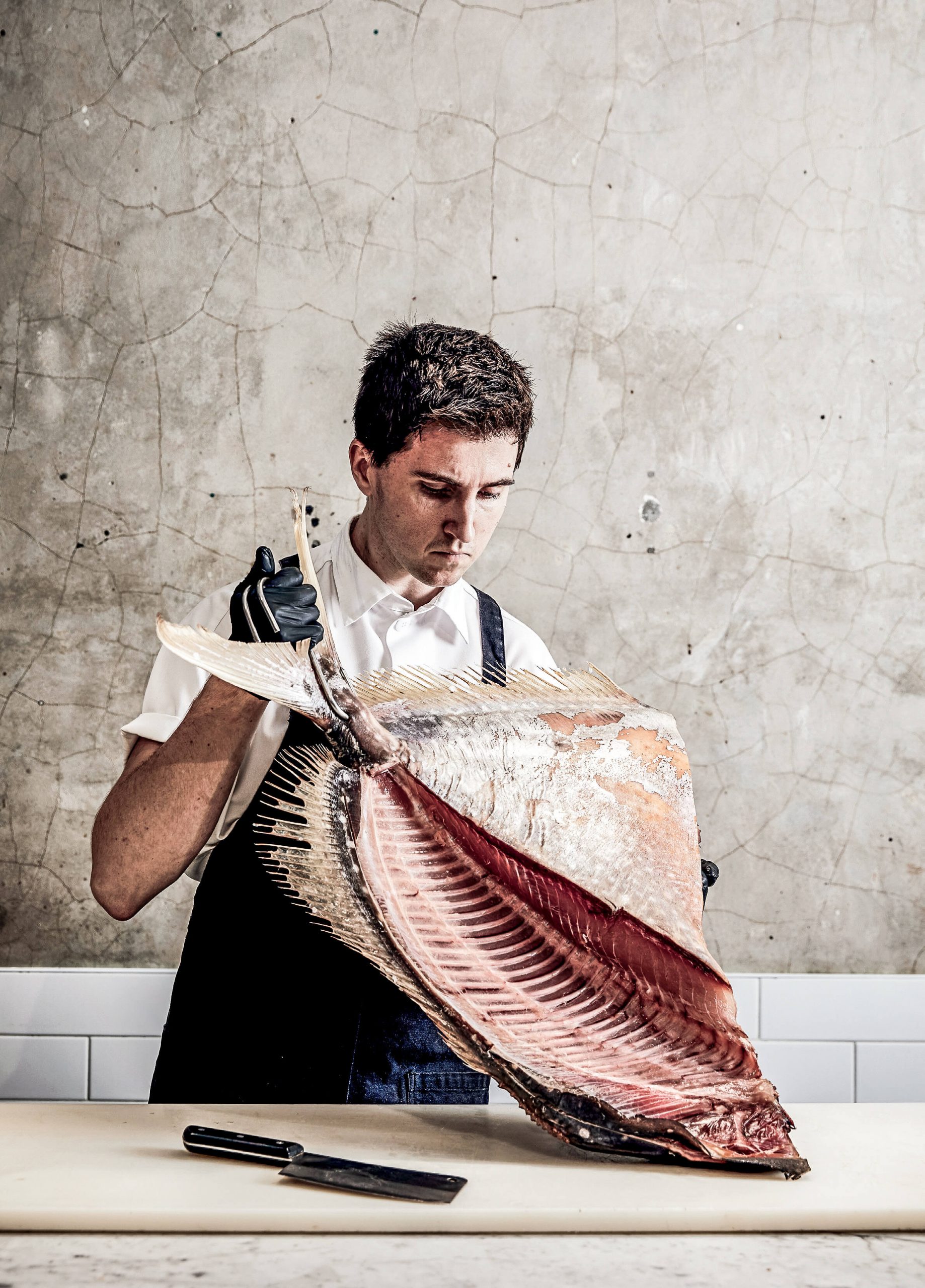
From the fin to the gills: Today, Josh Niland is considered a true legend when it comes to the holistic processing and dry aging of marine fish. His restaurant, which opened in Sydney in 2016, is considered a veritable seafood mecca that inspires the best of the best. | Image: Rob Palmer
The top Australian chef opened his critically acclaimed Saint Peter fish eatery in Sydney in 2016, which was shortlisted for the 2019 World Restaurant Awards in the “Ethical Thinking” category for good reason. At his restaurant, Niland is rethinking the entire culinary process for preparing fish, as well as setting new global standards in terms of “nose to tail” and maturation.
His downright revolutionary approach led to the opening of his first sustainable fish butchery in Australia in 2018. In addition to individual customers, Niland also delights the best restaurants in the Australian metropolis with matured, cured and smoked fish, including its offal. However, what made the saavy top chef shine the brightest – and still does – is his book “The Whole Fish,” which was published by Prestel Publishing in 2019. One of the most fascinating topics is storing, or to put it more precisely, dry aging fish.
What does maturation do?
First thing’s first, the clever Australian learned his craft from greats such as Steve Hodges or in the legendary test kitchen of Heston Blumenthals Fat Duck. The starting point for his fish creations is meat preparation, as cultivated in the early 2000s by the English grand master Fergus Henderson in his legendary London restaurant St. John; in 2004, this was immortalized in “From nose to tail,” now regarded a definitive work. The nose-to-tail philisophy stands for using every part of the animal in food prepration. At the time it was mainly used for pork, but now the concept is also applied to beef and other animals.
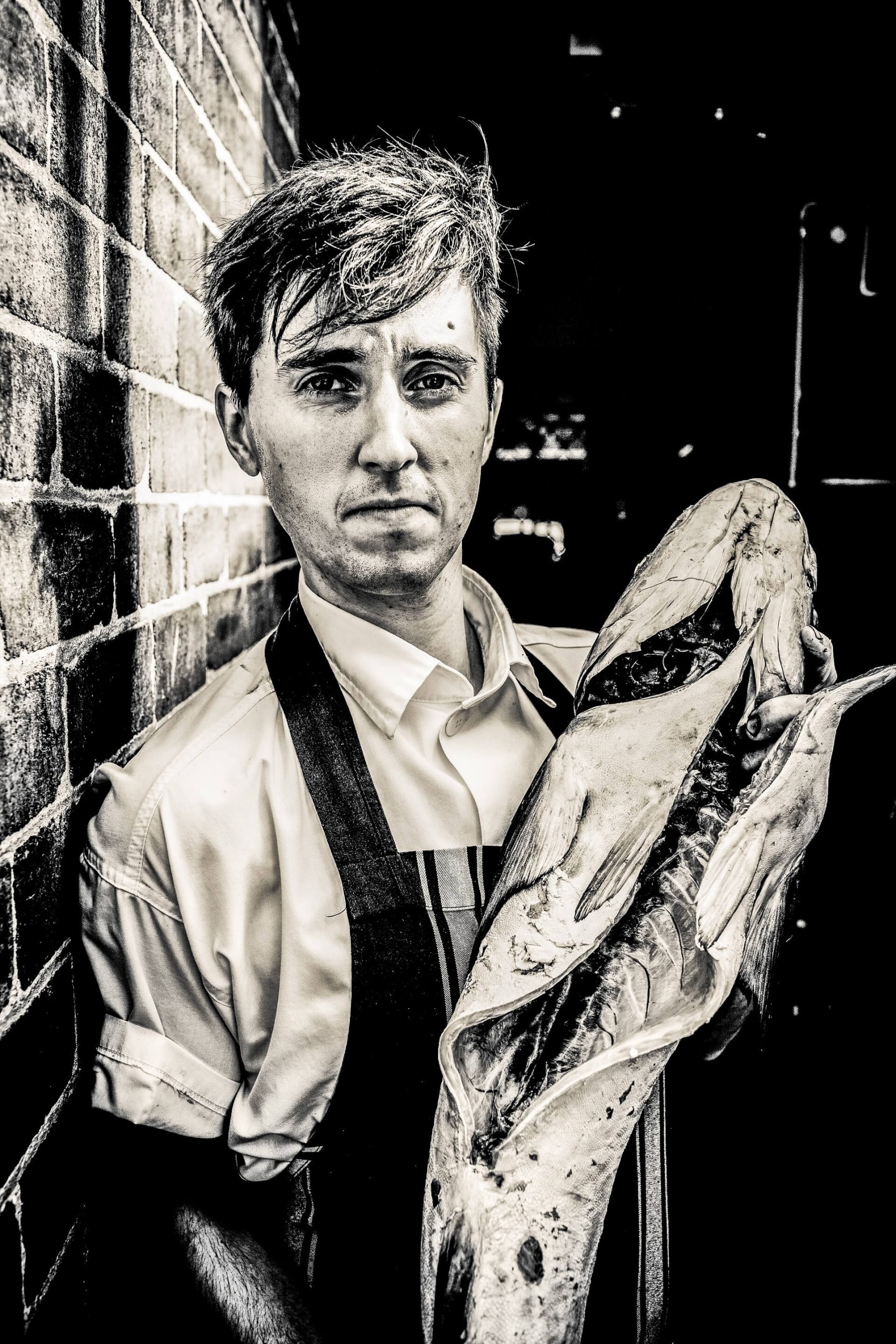
Freshly caught food tastes the best: Australian top chef and fish guru Josh Niland sets new standards in dry aging of delicious sea creatures, inspiring the best in their guilds worldwide. | Image: Mark Best
Either way, it was this new approach, which drew on old, almost forgotten techniques and conceived of the whole animal as a premium cut, that made Niland awareof the aromatic power of meat. In fact, he soon realized it was definitely not only meats like beef and pork whose flavors were greatly enhanced by maturation, but that this was true for fish as well. “The real reason why most people prefer to buy and eat fish straight from the boat is because it basically tastes like nothing,” writes Niland in his now well-established fish bible.
As with meat, the fish also has to mature skillfully. According to Niland, the aim is “not to dissolve the connective tissue that holds the muscle fibers together, as is the case with meat, but above all to ensure the fish loses as much unnecessary fluid as possible and thus gains taste”.
A similarly eye-opening detail can be found in another section: “The aging process brings out those flavors in the raw fish that you can barely taste in the first three days after catch.” So far, so good. But how exactly do you do this?
How is the fish aged?
Let’s start right away with the surprising deconstruction of a commonly accepted fact: You shouldn’t rinse fish. “This means,” writes Niland, “ideally, the fish should have had its last live contact with its element – and that should not change throughout the preparation process.” Of course, this also includes descaling and gutting. The fish is then ready to be chilled and stored. At this point, a variety of factors need to be taken into account. Niland has his own cold chamber with static refrigeration at his restaurant. He has devoted around 25 percent of the total refrigeration space forthis cold chamber. Because this cold chamber is cooled by copper spirals, it does not have a fan, thus ensuring even storage and maturation. And most importantly: The fish does not dry out too quickly or become tough.
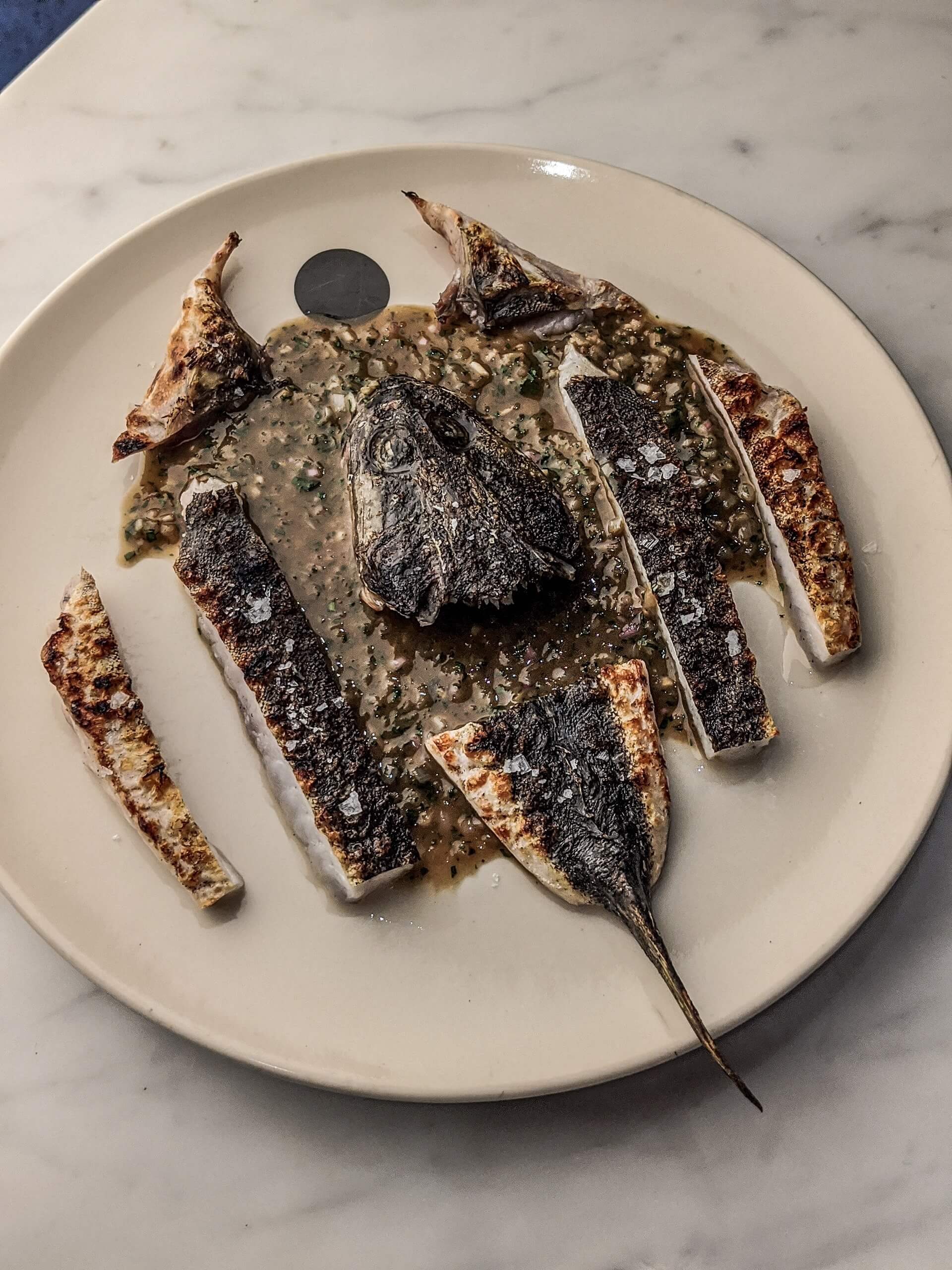
From the fin to the gills: Josh Niland uses the entire fish – and teases out the most complex flavors from the meat of these protein-packed sea creatures by means of an elaborate dry aging process. | Image Josh Niland
The cool chamber, basically as simple as it is ingenious, is divided into two roughly equal halves: one with rails on the ceiling, where large stainless steel hooks have again been installed, and the other with custom-made shelves consisting of draining trays and drip trays underneath. This means that the large fish are hung on rails with stainless steel hooks, while the small fish can be stored on the same drip trays. Incidentally, this prevents the small fish from starting to “sweat”. This is because when a fish lies on a flat surface, this sweating process causes it to lose fluid, which collects around it – and could thereby have a serious impact on hygiene conditions. The same is true when storing large sea creatures.
The temperature in the cool chamber should ideally be between 28 and 35 degrees Fahrenheit. At higher tempeartures you run the risk of spoiling the fish. In addition to temperature, humidity also plays a vital role. As the term “dry aging” suggests, the air should not exceed a certain humidity level. The best way to check this is by taking a look at the fish itself, as Niland writes: “There should definitely not be a layer of moisture on the fish’s skin. This is also the basis for extra-crispy skin when you sear or grill the fish later.”
That wraps up the technical details of the craft. However, one question still remains: Which fish are best suited for this process? Which ones can’t be used? And what does it all taste like?
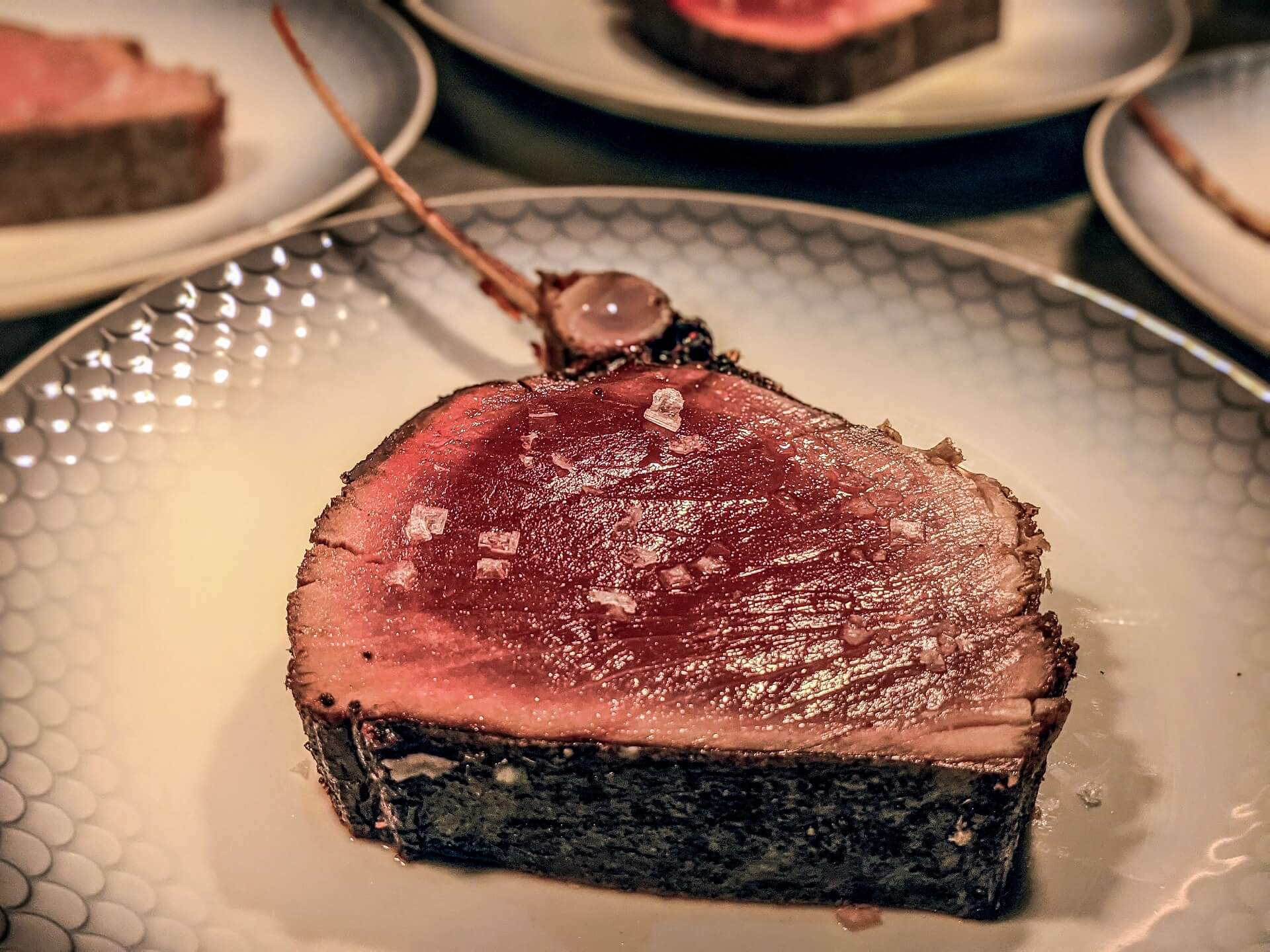
More than just fillet: For the fish guru Josh Niland, the whole fish is a premium cut. | Image: Josh Niland
Which fish are suitable for dry aging?
According to Niland, the following types of fish are particularly suitable for long dry aging: Spanish mackerel, tuna and swordfish. This is mainly because “they are very fatty and have dense muscle tissue – two factors that are very important when maturing fish.” This is particularly the case with yellowfin tuna, for example. If you try it from the third day of aging to day 36, the flavor evolves, Niland says, “from subtly sweet and salty to having an aroma of mushrooms and mojama (Spanish air-dried tuna); the texture also becomes much more dense.”
In contrast, fish with a less firm meat structure – such as the popular parse fish, the breed or the flounder – are unsuitable for long maturation. They usually reach their full gustatory potential as well as the peak of their texture after only four to five days in the cold chamber. There are also varieties that are simply not suit for the dry ager, whether you’re talking about a long or short aging process. Herring, whiting and Japanese mackerel, according to Niland, “contain little fat and therefore very little moisture, which means that they tend to dry out when matured.”
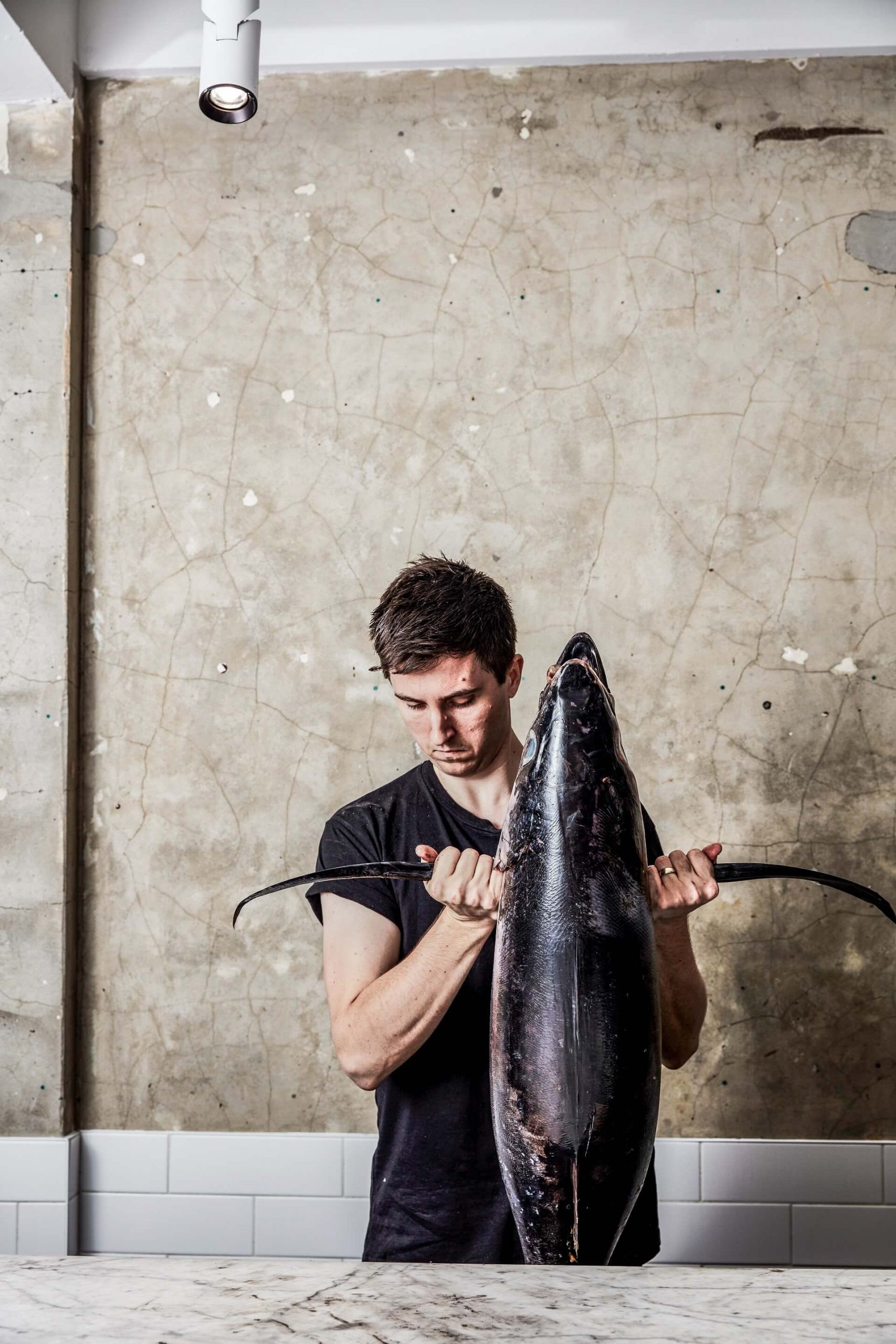
At his restaurant Saint Peter, Josh Niland and his team rely on a cool chamber with stainless steel hooks for the large fish and tailor-made drip trays for the small fish. The temperature in the fish cooling chamber should ideally be between 28 to 35 degrees Fahrenheit. | Image: Rob Palmer
But what can you do with all those fish that are so ideal for dry aging , and can give even diehard fish lovers completely new culinary experiences? For example, Niland serves a positively heavenly yellowfin tuna tartare with pickled onions, egg yolk and chicory at his avant-garde restaurant. In this dish, Niland uses around nine ounces of seven to nine day-aged yellowfin tuna loin. The fish is cut into pieces about a half a inch in size, which are placed into a bowl and mixed with shallots, pickled onions, chives and egg yolk. Drizzled with two ounces of olive oil, the mixture is finally added to the liquid where the pickled onions were stored until the tuna tartare has reaced its desired level of acidity. Sea flakes and pepper round it all off. This is just one recipe that illustrates the many things that can be done with matured fish meat.
Niland delivers a veritable tour de force in his book, which, in addition to detailed descriptions of his formidable fish craftsmanship, features plenty of recipes that even top gastronomic giants like René Redzepi and Grant Achatz regularly turn to for inspiration. One thing’s for sure: Today’s open-minded guests will increasingly be served matured fish in the future. And, who knows, maybe discover what fish can really taste like for the very first time at a restaurant.


